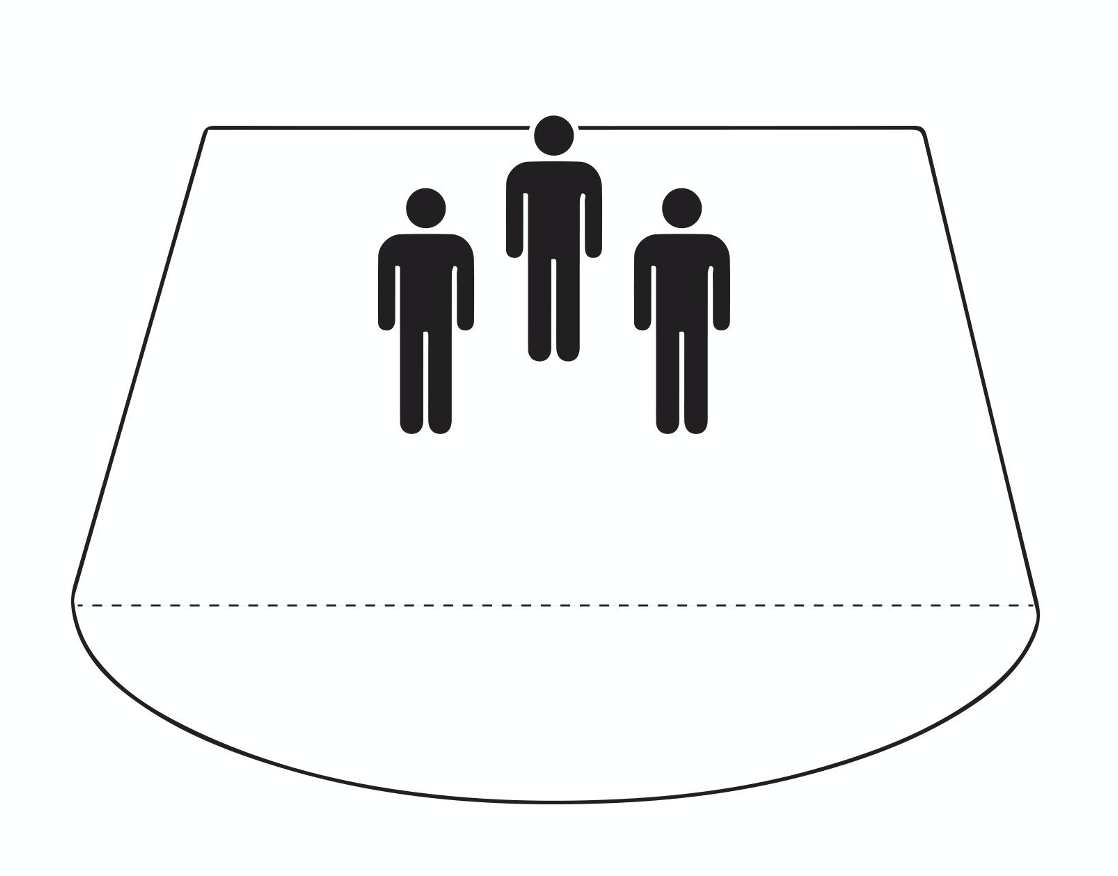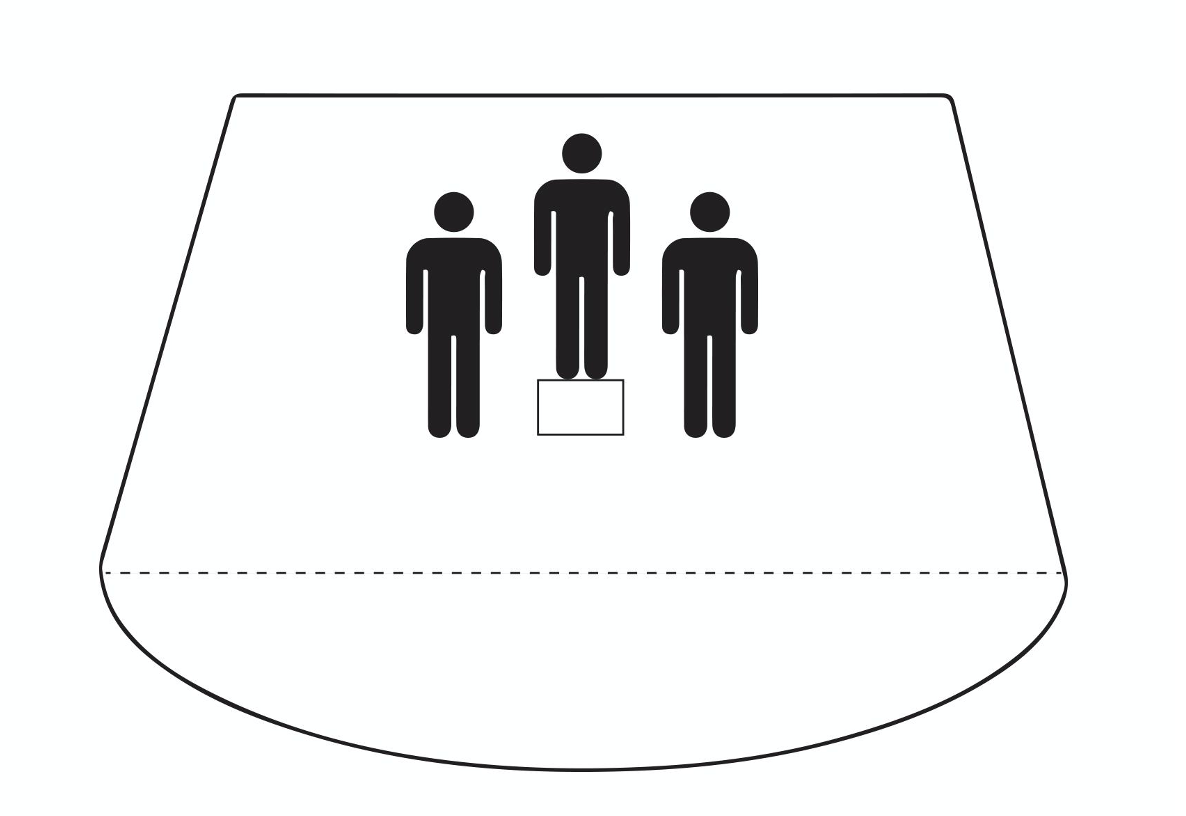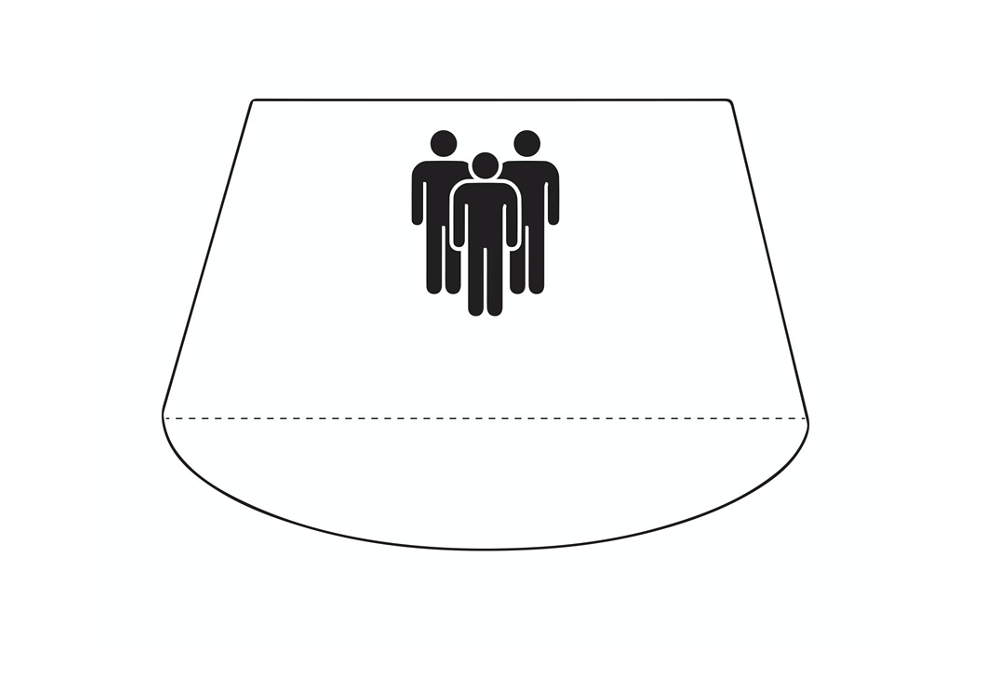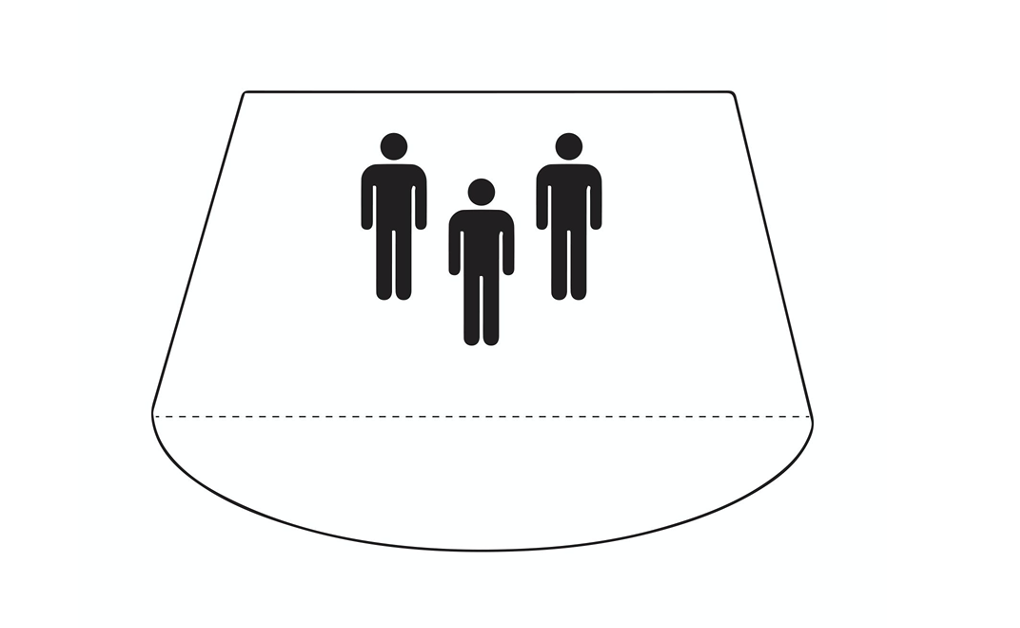7.4: Lesson 3- Levels
- Page ID
- 74104
Levels create visual interest and provide opportunities for dynamic staging. Levels are necessary to staging and should be introduced as much as possible. One strong principal to keep in mind is to create a visual triangle (Figure \(\PageIndex{1}\)) whenever possible. Triangles are visually pleasing and create a focal point. Anytime you have 3 or more actors on stage try to position them into either a triangle or a shape with a visual apex. When looking at staging you need to view levels in terms of depth and height in regards to the stage.

When actors stand in a straight line (Figure \(\PageIndex{2}\)) the image for the audience is flat and uninteresting, yet when one member of the group moves slightly upstage or downstage to create a triangle (Figure \(\PageIndex{3}\)), the image gains visual interest.

You can also create levels through height. If two actors are sitting and one is standing the person standing becomes the apex of the triangle and receives the focus and power. The same relationship applies in reverse. If two characters are standing the character sitting is again the apex of the triangle and draws focus.

Utilizing levels built into the set is another way to enhance visual interest and create beautiful stage pictures (Figure \(\PageIndex{4}\) and Figure \(\PageIndex{5}\)). As the director step back from the stage and try to create large visual levels when possible. Use the entire stage. When training use acting blocks, tables, and chairs to create your set and provide levels.


Staging Exercise 1
- Create a silent scene with a beginning, middle, and end in which a character enters a dangerous environment, encounters obstacles, and is transformed into something new.
- Utilize levels in at least 3 moments in the scene.
- Rehearse for 1 hour and then present
- Discuss and critique each scene
- Remember to always focus on successful elements first. People need to know what they are doing well more than they need to know what to improve. Encourage progress and try to give 5 positive comments to each suggestion for improvement.
- Rehearse for an additional 15 minutes in order to incorporate notes.
- Present scenes a final time without notes or critique.
Staging Exercise 2
- Create a scene where someone in the scene is sitting, standing, kneeling, and laying down at all times. You have to justify each movement and as someone moves to a new position, another character must shift to keep the balance.
- Rehearse for 1 hour and then present
- Discuss and critique each scene
- Remember to always focus on successful elements first. People need to know what they are doing well more than they need to know what to improve. Encourage progress and try to give 5 positive comments to each suggestion for improvement.
- Rehearse for an additional 15 minutes in order to incorporate notes.
- Present scenes a final time without notes or critique.
Staging Exercise 3
- Create a scene where a character goes on a silent journey and something familiar become new and abstract. Use levels in at least 3 seperate moments within the scene.
- Rehearse for 1 hour and then present
- Discuss and critique each scene
- Remember to always focus on successful elements first. People need to know what they are doing well more than they need to know what to improve. Encourage progress and try to give 5 positive comments to each suggestion for improvement.
- Rehearse for an additional 15 minutes in order to incorporate notes.
- Present scenes a final time without notes or critique.

